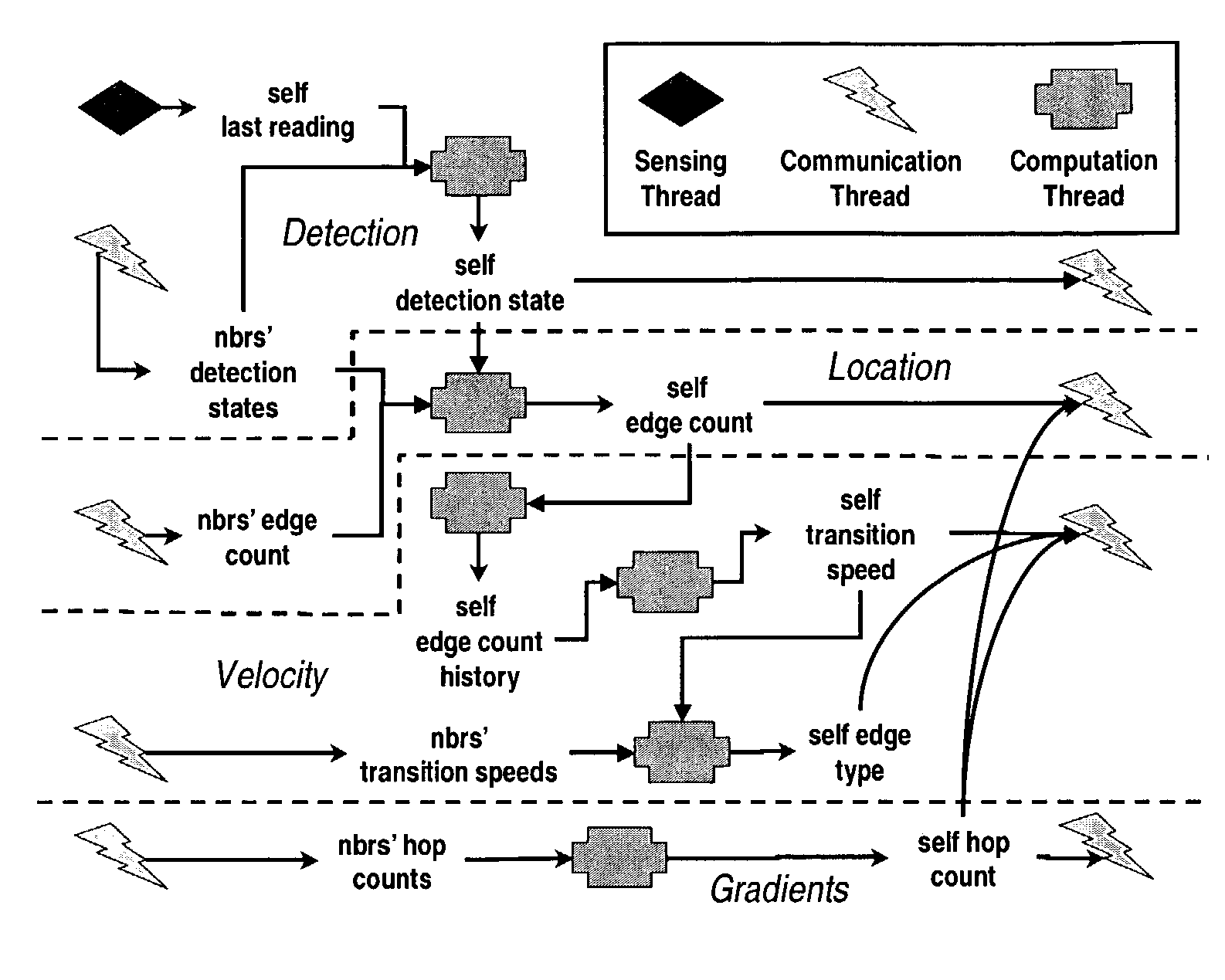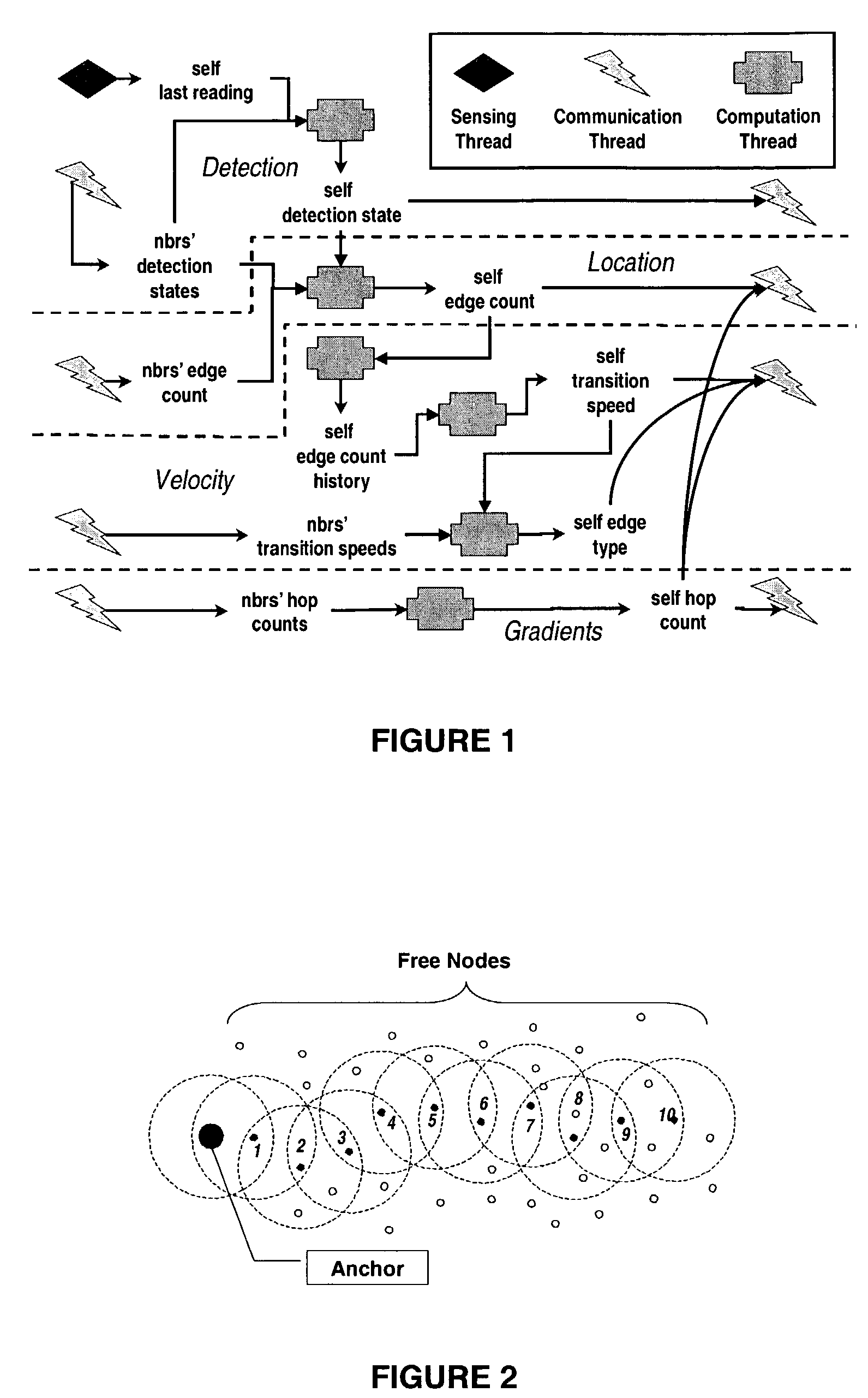Decentralized detection, localization, and tracking utilizing distributed sensors
a distributed sensor and detection method technology, applied in the field of person and object tracking, can solve the problems of increasing difficulty in automatically detecting such movements, human-intensive operations, and the overwhelming amount of data of approaches that analyze data in a central computing facility
- Summary
- Abstract
- Description
- Claims
- Application Information
AI Technical Summary
Benefits of technology
Problems solved by technology
Method used
Image
Examples
Embodiment Construction
[0019]As discussed in the Background of the Invention, SNIPF is based on swarm intelligence [1,3], a new approach to information processing that uses the interactions among processors as well as computation within processors to detect, analyze, and respond to sensory input. This approach contrasts with other approaches in common use.
[0020]SNIPF processes sensory data in situ, not centrally, in contrast to data mining and data warehousing approaches. In contrast to conventional artificial intelligence approaches, processing is numerical, utilizing insect-inspired digital “pheromones,” and not symbolic implementations. Spatial reasoning draws on each node's location and the limited neighborhood induced by short radio range, rather than using an explicit representation of space, thus different from traditional signal processing.
[0021]Each node interacts with its environment in three ways. It reads its local sensors, receives messages broadcast by nearby neighbors, and broadcasts messag...
PUM
 Login to View More
Login to View More Abstract
Description
Claims
Application Information
 Login to View More
Login to View More - R&D
- Intellectual Property
- Life Sciences
- Materials
- Tech Scout
- Unparalleled Data Quality
- Higher Quality Content
- 60% Fewer Hallucinations
Browse by: Latest US Patents, China's latest patents, Technical Efficacy Thesaurus, Application Domain, Technology Topic, Popular Technical Reports.
© 2025 PatSnap. All rights reserved.Legal|Privacy policy|Modern Slavery Act Transparency Statement|Sitemap|About US| Contact US: help@patsnap.com



